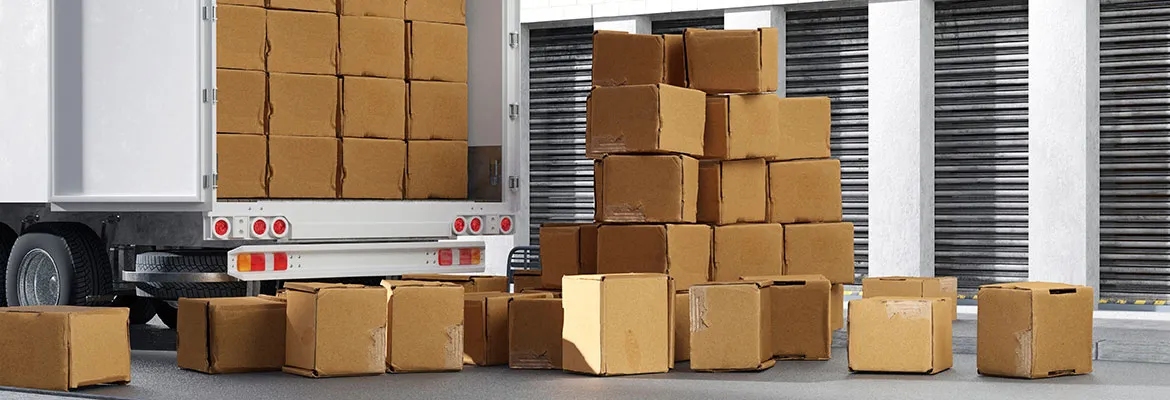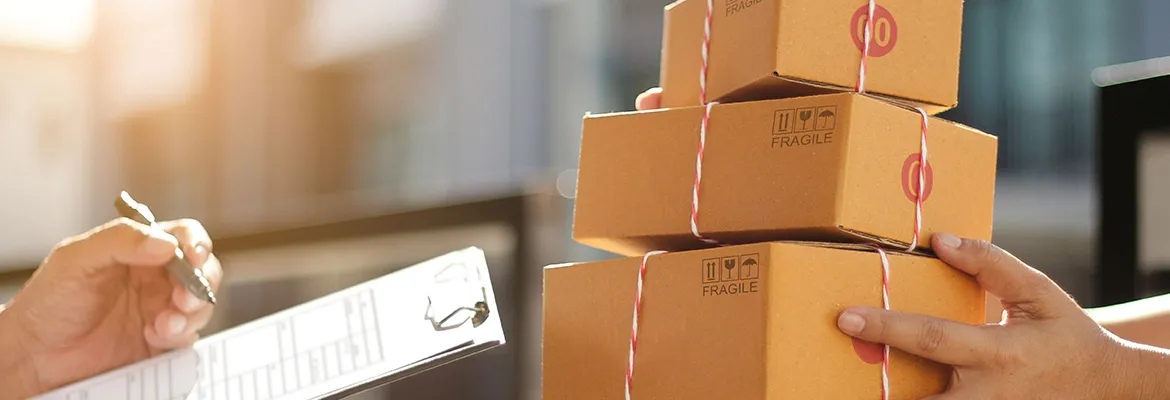%20(1).jpg)
Single-use plastic labelling ordinance - or: The new warning about plastic
- An average of 8 million tonnes of plastic waste ends up in the oceans every year, causing enormous environmental damage.
- Disposable plastic products are particularly tricky because they are often disposed of improperly - namely in nature or in the sewage system.
- Therefore, consumers should be sensitised for more careful use of single-use plastic: Less consumption, less pollution and more recycling are the goals.
Uniform EU-wide labelling of single-use plastic products will therefore become mandatory for all manufacturers. In this way, potentially problematic plastic waste can be identified directly at the point of purchase and treated accordingly.
Single-use plastic labelling ordinance (In german: “Einwegkunststoffkennzeichnungsverordnung”) and single-use plastic ban ordinance (In German: “Einwegkunststoffverbotsverordnung”) - these unwieldy terms conceal new draft laws intended to implement EU directives in Germany. Their goal: less plastic that ends up in the environment and has a harmful effect there. In addition, the mandatory labelling of certain products is intended to make people more aware of the consumption of plastic. We explain what the new regulation is all about.
The basis for the new Single-Use Plastic Labelling Ordinance(In German: “Einwegkunststoffkennzeichnungsverordnung”) (EWKKennzV) is the EU Directive 2019/904, which was already adopted in 2019 to reduce the impact of certain plastic products on the environment.
Single-use plastic as a global environmental problem
Despite high recycling rates and the immense potential for plastic recyclates, several million tonnes of plastic waste still end up in the environment every year. The oceans have literally become a reservoir for diverse plastic waste.
.png)
Not all of it comes from packaging waste, but a significant portion does. From careless handling of plastic shopping bags to deliberate and illegal disposal by ships - plastic waste enters the sea in many ways. So we are not only literally swimming in plastic.
High consumption - high waste generation
One reason for the state of our environment is the high consumption of products made of disposable plastic. Drinking bottles, coffee cups, straws, the list is long. It is impossible to imagine everyday life without plastics, and that is also part of the problem: plastic packaging is within our reach everywhere, and often it is impossible to avoid it (despite better alternatives).
The difficulties that arise from this can be illustrated particularly clearly using
- Because they cannot be reused immediately, disposable bottles are shredded.
- Only a small part of the plastic is then turned back into bottles: 25 per cent is used for plastic foil production, 20 per cent in the textile industry and about 30 per cent becomes pallet banderoles or similar products.
- The proportion of recycled plastic in new disposable bottles is just as modest. It is about 25 per cent - so the bottles are mainly made of new plastics.
In addition, theCO2 balance, is far worse than that of reusable bottles. The German environmental organisation Deutsche Umwelthilfe assumestwice as many emissionsif the entire life cycle of the bottles is taken into account..jpg)
In one important point, however, disposable bottles differ from other packaging products made of disposable plastic: in many cases, they already have a label because they are integrated into the deposit-refund system This actually makes it clear how and where they should be disposed of.
THE SINGLE-USE PLASTIC LABELLING ORDINANCE - AND WHAT IT ACTUALLY MEANS
On 10 February 2021, the new ordinance, abbreviated as EWKKennzV, was adopted by the German Federal Cabinet, and the regulations then came into force throughout the EU from 3 July 2021. What will this change for products made of single-use plastic and their manufacturers? The most important questions at a glance.
WHAT ARE THE PROVISIONS OF THE NEW REGULATION SUPPOSED TO ACHIEVE?
The EU Single-Use Plastics Directive and the new regulation aim to reduce the consumption of single-use plastic products in the future. To this end, the EWKKennzV is intended to help make plastic more visible as an important resource.
So an important aspect of the regulation is to make consumers aware of their plastic consumption: What actually contains plastic? What is the best way to dispose of the labelled product? These are the questions around which the labelling obligation revolves.
Its aim is not least to ensure that less plastic waste is improperly disposed of in nature or the sewage system.
WHICH PRODUCTS ARE AFFECTED AT ALL?
The EWKKennzV covers a wide variety of products made of single-use plastic. According to the new legal requirements, labelling is required for:- Packaging of hygiene products containing plastic (sanitary towels, tampons, tampon applicators) and wet wipes;
- Packaging of tobacco products with plastic-containing filters;
- Packaging of plastic-containing filters for the use of tobacco products;
- Disposable beverage cups.
In the last case, by the way, the labelling must be placed directly on each individual cup and not on the packaging.
Unlike drinking straws, stirrers for coffee or disposable tableware, these products will not be banned, at least for the time being. This is only because there are no ecologically more sensible alternatives so far. However, the EU Commission wants to take until 2027 to evaluate the directive in detail. So it is quite possible that the bans will be extended because of new product developments.
Just like the EWKKennzV, the new regulation for the ban of certain single-use plastic products came into force on 3 July 2021. However, it does not only affect packaging but generally those products that
• consist entirely or partly of plastic,
• should not pass through several product cycles o
• are to be reused for the same purpose.
In addition to certain types of packaging, the regulation also applies to plastic cutlery, plastic cotton buds, drinking straws and disposable cups made of styrofoam. After the regulation comes into force, they may no longer be placed on the market.
DOES THE REGULATION ALSO IMPOSE NEW REQUIREMENTS ON THE PRODUCTS CONCERNED?
So far, only one specification for new product requirements has been laid down in the regulation. This concernsbeverage containers with caps or lids. If these are made of plastic, they must be firmly attached to the beverage container from July 2024. The background is an unattractive one: the detached caps and lids are part of the disposable plastic waste that now turns upmost frequently on European beaches. With the fixed connection, this should be curbed in the future..jpg)
The technical requirements for this have not yet been defined, but a European standard is in the works. It will be announced in time so that manufacturers can adapt to the new requirements.
What does the labelling obligation mean for manufacturers?
The Federal Ministry of Environment, Nature Conservation and Nuclear Safety (BMU) does not see any serious consequences for manufacturers as a result of the EMKennzV. This is because it actually only requires additional labelling. Other such labels already have to be printed anyway because of health protection requirements or brand designation. In this respect, the effort is therefore hardly greater than before. The BMU thus does not expect an increase in the price of the products concerned.
The case could be somewhat different for disposable beverage cups because here every single one has to be labelled. This means more effort, at least in production. Whether this in turn has an impact on the prices for the cups cannot yet be answered.
Under certain circumstances,rising production costs and sales pricescontribute to a stronger switch to reusable products. This, in turn, would be entirely in line with the Single-Use Plastic Labelling Regulation.
In practice, there is atransitional period for manufacturers. in any case. This applies until 3 July 2022. During this period, stickers with the label may still be used, but they must not be removable. In this way, goods that have already been produced can still be sold and do not have to be destroyed.
Traders, on the other hand, can still sell products that are not labelled beyond the transitional period. In the foreseeable future, however, they are to disappear from the market altogether. This will be ensured not least by a ban on the import of unlabelled plastic products from non-EU countries.
What does the labelling look like for the products?
Within the EU, the plastic products in question are given a uniform label. This consists of a pictogram with associated text for each product category covered by the EWC Labelling Regulation.The relevant official language of the EU member states is decisive, but it is also permissible to translate the labelling into other languages.
.jpg)
These articles might also interest you:

Shipping costs - the big provider comparison
Sending a parcel within Germany or to another country can involve completely different postage costs.
The amount of postage depends not only on the size or weight of the parcel.

Pack safely for transport
A guide for everyone who wants to pack goods. Parcel shipping in Germany is booming: in recent years, the volume of shipments packed in shipping boxes has risen continuously.

Customised shipping boxes - The answer to rising shipping costs
The savings effect is achieved at labelprint24 by minimising the material required for the shipping box without neglecting the protective function of the packaging.




